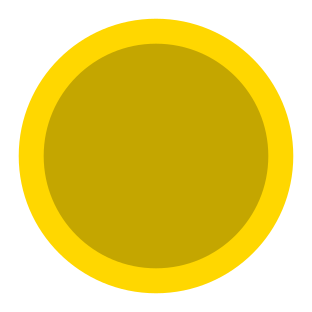We just discovered the switch  , which we can use to control the path of a
, which we can use to control the path of a  .
.
The canute  is a variant of the switch. With the switch, both
is a variant of the switch. With the switch, both  go in the same direction. However, the canute “kicks” the checker
go in the same direction. However, the canute “kicks” the checker  back the way it came.
back the way it came.
Just like with the switch, we can use a distributor  to spread out the output. But we don’t have to — it’s fine to keep the output half a cell apart in many cases.
to spread out the output. But we don’t have to — it’s fine to keep the output half a cell apart in many cases.
application
So what’s the point of a canute, when we already have a switch?
The real power of a canute will only become apparent later. Right now, just keep it as another tool in your toolbox — it might be useful for designing your own patterns; it’s just a different kind of switch.
manufacturing
If you’re following along with a review kit, you might have noticed the canute  looks slightly different to your other pieces.
looks slightly different to your other pieces.
When we 3D print our prototype roons, we use a system called AMS to switch between multiple colours. This switching process takes a couple of minutes, so we want to reduce the number of switches. Because 3D printing works by building up vertical layers, we want to design our pieces so that different colours don’t cross multiple layers — otherwise we’ll be constantly switching back and forth.
… so, we print most roons in two parts and then glue them together. We’ve designed the parts so that the AMS only needs to change colours once.
But the canute  is a special creature. The tiny bumps and mismatches we get from this 2-part process just aren’t smooth enough for the canute to work properly. Therefore, we print the canute in a single piece, even though it forces the AMS to perform a lot of switches.
is a special creature. The tiny bumps and mismatches we get from this 2-part process just aren’t smooth enough for the canute to work properly. Therefore, we print the canute in a single piece, even though it forces the AMS to perform a lot of switches.
If the Kickstarter campaign succeeds, we’ll be switching to a process called injection moulding, which lets us print all the parts efficiently — so the canute will look just like all the other roons.
next
Now we have roons that handle marble interaction, let’s upgrade our timer.
continue
